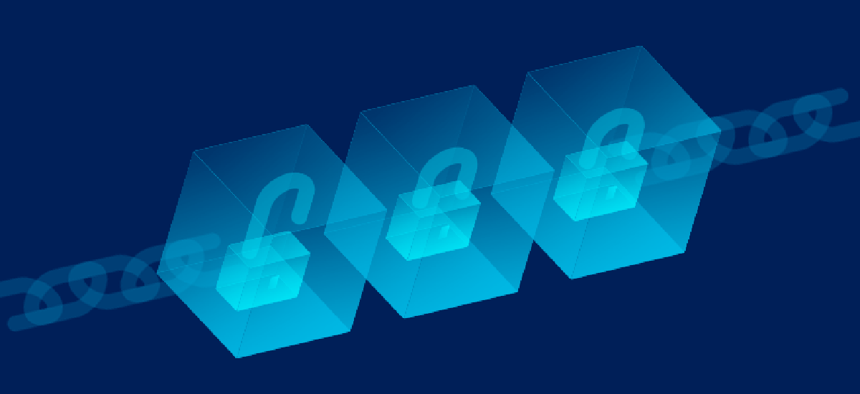HHS updates on blockchain application

The Department of Health and Human Services will test its blockchain-based acquisition system in the coming months, as it works on other ideas to harness the electronic ledger technology.

The Department of Health and Human Services plans on a fall test of its Accelerate blockchain-based acquisition portal and a rollout by the beginning of the year, the agency's CIO said.
Accelerate is the first blockchain-based program in the federal government to get an authority to operate certification.
HHS CIO Jose Arrieta said in remarks at NextGov's Emerging Tech summit on Aug. 14 that the agency has been working on developing microservices for the agency's blockchain and artificial intelligence-infused acquisition portal.
For instance, he said, contracting officials will have capabilities based on the deep database acquisition data from the agency's five acquisition systems that will drive automatic pricing breaks used by major retailers.
"If you look up the price of something on Amazon and show it to the cashier at Target or Best Buy," he said, they will immediately give you the comparable discount offered at those other retailers. "That's empowering. We created that ability for the contracting professional" on the Accelerate portal, he said.
Arrieta said his agency is looking to test the portal in October and move the capability out for full agency use by January.
Other agencies, he said, can use some of the portal's top-level capabilities for their own acquisition work, since its core node that supports the business service layer adheres to the Federal Acquisition Regulation and the General Services Administration's category management initiative. Agencies can build their own custom microservices based on the core and business service layer, he said.
"No more rewriting SAM.gov information, reputation and certification validation, automate financial responsibility determination" and other necessary, but time-consuming actions, he said.
HHS, he said, is also working with the Defense Information Systems Agency (DISA) on a blockchain-based behavioral-based identity management pilot.
"We're just talking at this point," said Arrieta of the work with DISA. The idea, he said, is use interlaced identity points to lock down access without using more vulnerable passwords or user names. The solution would combine biometrics and behavioral information as a foundation to provide secure access to a variety of networks and devices to health workers, including first responders in the field and doctors in the operating room.
Those attributes, he said, could be loaded onto a $7 phone dongle attached to a smart phone that would potentially provide secure, less cumbersome and costly identity access to all the user's networks and devices. "This might be too much" of a leap for the current workforce, he said, but it could provide more security down the line.
"It's powerful," he said, as it "limits the power of whoever the [network] infrastructure provider is."





